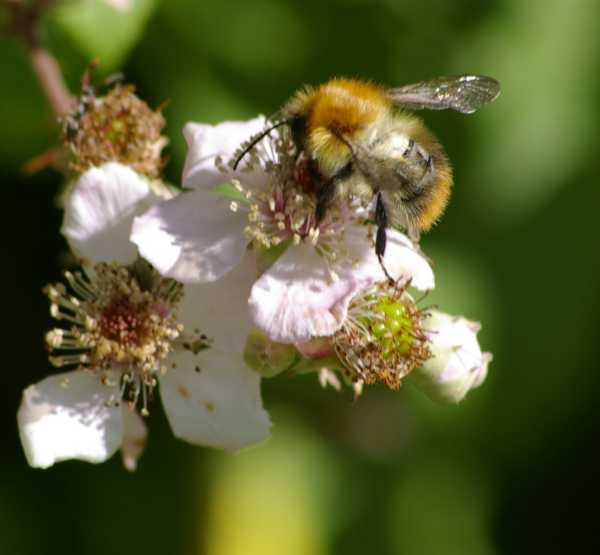Why Do Bumble Bees Raise Their Legs?
If, whilst observing or handling a bumble bee, you noticed that it raised a leg, you may be wondering about the reason for this behaviour.
The first leg to be lifted is usually the middle leg, but sometimes other legs and more than one leg will be raised.
Here we'll take a look at the key reason for this behaviour.
Why Do Bumble Bees Raise Their Legs?
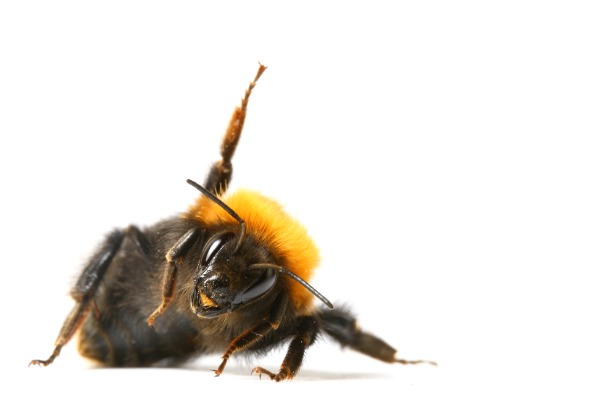 A Bombus hypnorum - Tree Bumble Bee tilting its body as it raises a leg. But why do bumble bees do that?
A Bombus hypnorum - Tree Bumble Bee tilting its body as it raises a leg. But why do bumble bees do that?I have known for years that when a bumble bee tilts its body sideways a little, then extends a leg upward, this tends to be a defensive response in reaction to a threat.
It's a bit like the bumble bee's way of saying 'Get away from me!' or 'Leave me alone!'
However, in 2021, a team of scientists in the US decided to investigate this behaviour further1.
In doing so, they gave the behaviour a name: Disturbance Leg-lift Response (DLR).
The scientists confirmed that indeed, DLR occurs when a threatening object approaches and draws close.
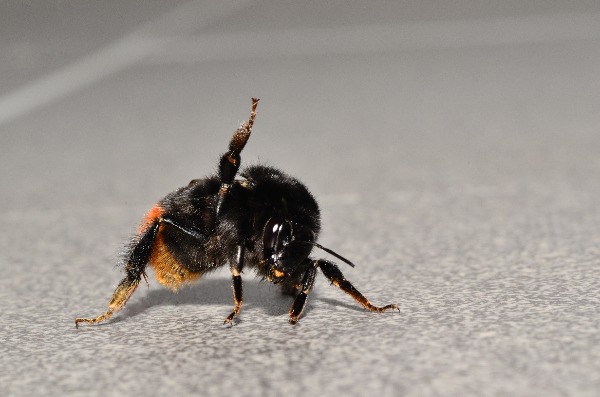 Bombus lapidarius - Red-tailed Bumble Bee demonstrating a Disturbance Leg-lift Response (DLR)
Bombus lapidarius - Red-tailed Bumble Bee demonstrating a Disturbance Leg-lift Response (DLR)If Bumble Bees Raise Their Legs, How Likely Are They To Sting?
The scientists also assessed the sequence of behaviours that might follow the DLR.
In particular, if indeed the behaviour occurs in response to a threat, how likely are the responses of biting and stinging to follow the leg-lift?
The team conducted their experiments using a toothpick which they used to startle a bee inside a tube.
Note that bumble bees will sometimes fight with each other (for example, when queens compete for a nest site).
However, bumble bees are highly unlikely to bite humans even if threatened.
Indeed, it was no surprise to me that the research team found that biting was rarely witnessed (only in 1.25% of cases) following DLR.
In fact, what the researchers described was a grasping of the toothpick with their mandibles (jaws), but even this behaviour occurred infrequently. The research team also recorded a biting incident as one in which the bee simply opened and closed its mandibles, whether or not contact was made with the toothpick.
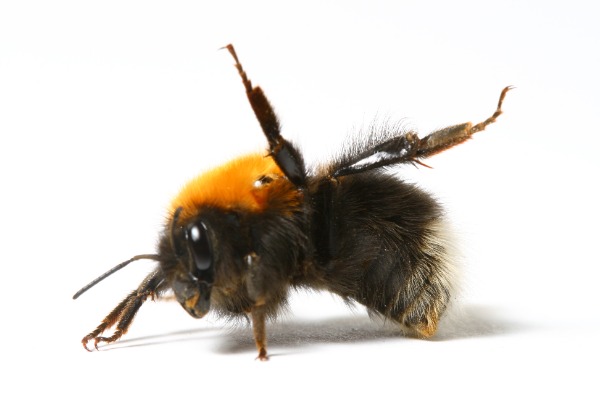 Sometimes bees will lift more than one leg
Sometimes bees will lift more than one leg
However, the team did find that a DLR response would often precede stinging, or (from the description of the behaviour), a threat to sting, by a curving of the abdomen - actually in 30% of cases.
Furthermore, a sting rarely occurred without the bee first raising its leg (this event only happened in 0.62% of cases).
This is not a surprise, but the research does confirm the theory that bumble bees raise a leg in response to a threatening stimulus.
What this means for 'bee gogglers'
If you are fascinated by bumble bees, and enchanted by their cute, cuddlesome appearance, it can be tempting to want to get really close to these adorable creatures.
However, if you ever try to touch or 'interfere' with a bumble bee in anyway, such as by poking at it with a finger or a twig, the bee may raise a leg.
In truth, this response is not only defensive, it suggests the bee is feeling stressed - and it has been shown that bees do have feelings!
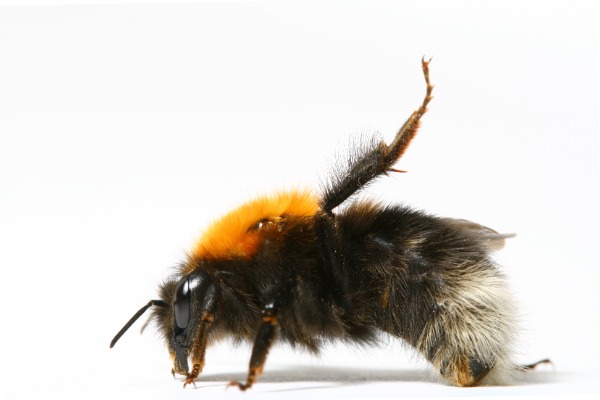 If you see DLR behaviour, the bee is likely to feel threatened and stressed.
If you see DLR behaviour, the bee is likely to feel threatened and stressed.I don't particularly recommend attempting to pet a bee, though I am aware people sometimes do.
I also sometimes hear of people poking at a bee because they want to check whether it is dead or sleeping.
A stinging incident could be provoked on such occasions, but in any event, I'm sure most of us would not wish to cause unnecessary anxiety for the bee.
So in conclusion....
Regardless of the scenario, if you see a bumble bee raising its leg, it would be best to see this as a request from this sweet little creature, to leave it alone, and admire it from a distance instead.
References
1. Varnon CA, Vallely N, Beheler C, Coffin C. The disturbance leg-lift response (DLR): an undescribed behavior in bumble bees. PeerJ. 2021 Mar 25;9:e10997. doi: 10.7717/peerj.10997. PMID: 33828912; PMCID: PMC8005288.
